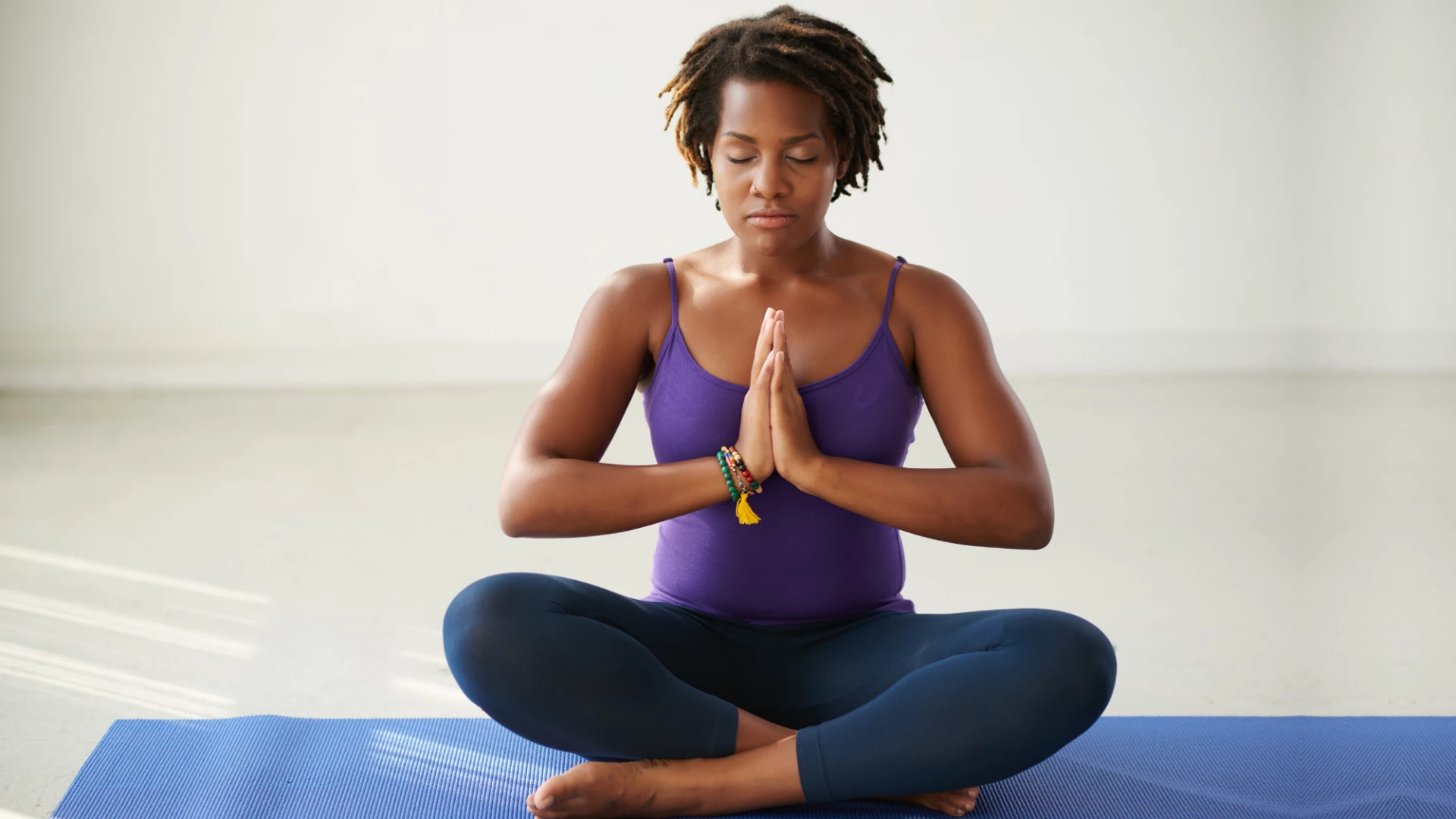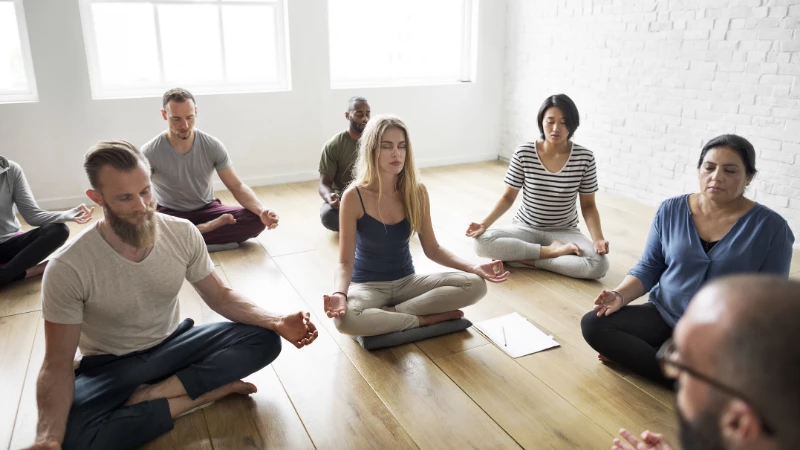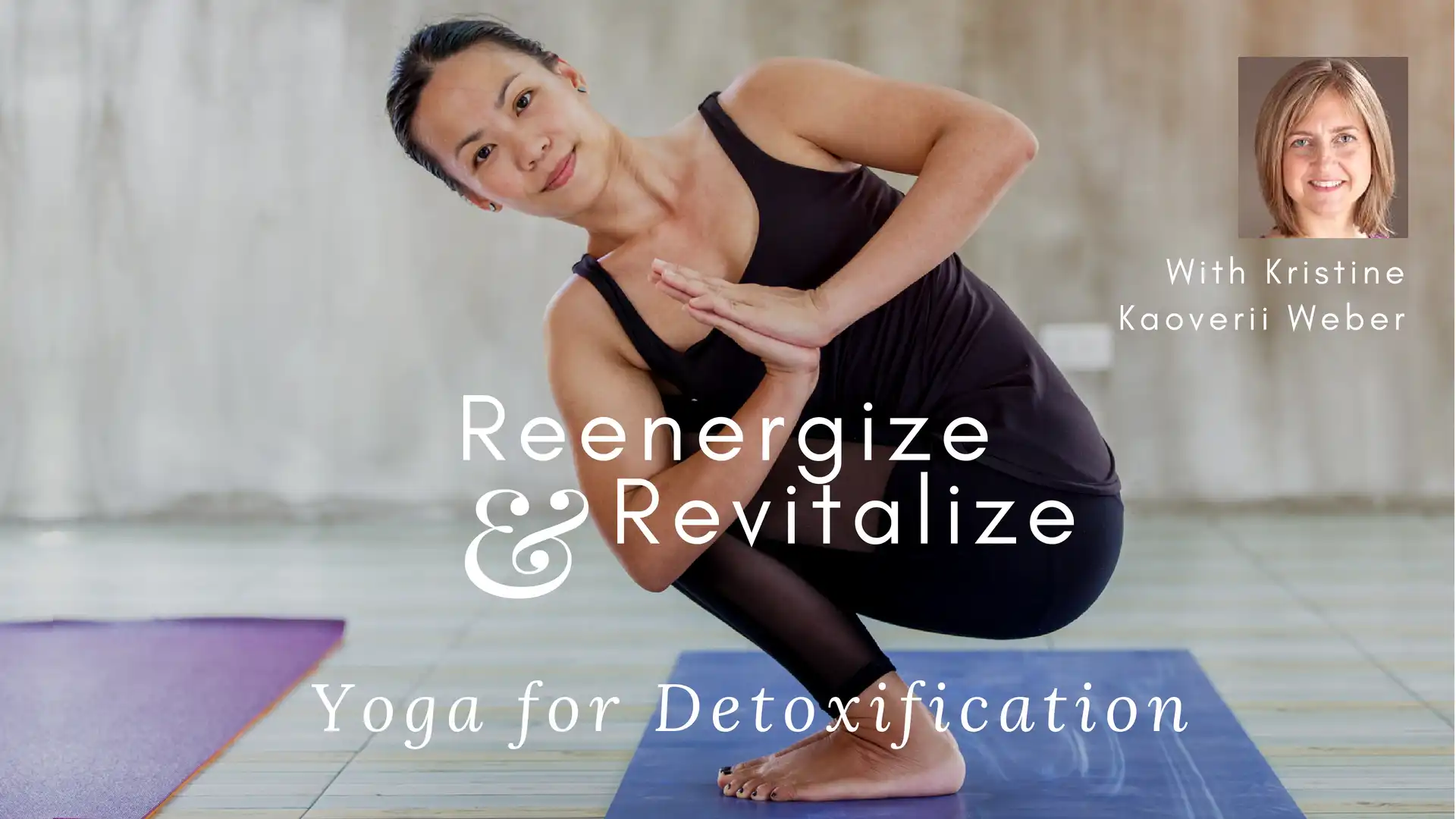What Is the Real Yoga? Hint: There’s More to it Than Just What’s in the Yoga Sutras

A number of years ago, while I was taking a “yoga for seniors” workshop, the conversation turned philosophical. A student asked, “If yoga means ‘union’ then why does the Yoga Sutras define yoga as ‘stopping the fluctuations of the mind?’”
Before the presenter could answer, another student jumped up, thrust her hand out in a “stop” mudra and announced, “If it’s not in the Yoga Sutras, it’s NOT yoga!”
Besides the fact that her response side-stepped the problem that asanas are not detailed in the Yoga Sutras (even though that’s mostly what we do in yoga workshops), the other issue here is that the Yoga Sutras, while an important text, is not the only traditional yoga text.
Yoga is a wide and varied tradition. And there are plenty of places where yoga does mean union, including the Hatha Yoga tradition. The Yoga Sutras is just one in an array of texts that have defined yoga in many different ways. Yes, it’s one of the six classical Indian darshans or orthodox systems, and it really is better understood in the context of the Śruti, which is the body of classical, ancient religious texts from India. So it’s certainly an important text, but it’s not the only one.
How Yoga Defines Itself
Here’s a list I found a long time ago that really only scratches the surface of possible definitions:
-
“Yoga is the cessation of the fluctuations of the mind (citta).”—Yoga Sutra (1.2)
-
“Yoga is skill in (the performance of) actions.”—Bhagavad Gita (2.50)
-
“Yoga is bliss (samādhi).”—Yoga Bhāshya (1.1)
-
“Yoga is said to be the oneness of breath, mind, and senses, and the abandonment of all states of existence.”—Maitrī Upanishad (6.25)
-
“Yoga is the union of the individual psyche (jīvātman) with the transcendental Self (paramātman).”—Yoga Yājnavalkya (1.44)
-
“Yoga is said to be the unification of the web of dualities (dvandva-jāla).”—Yoga Bīja (84)
-
“Yoga is known as the disconnection (viyoga) of the connection (samyoga) with suffering.”—Bhagavad Gītā (6.23)
-
“Yoga is said to be control.”—Brahmānda Purāna (2.3.10.115)
-
“Yoga is the separation (viyoga) of the Self from the World-Ground (prakriti).”—Raja-Martanda (1.1)
-
“This they consider Yoga: the steady holding of the senses.”—Katha-Upanishad (6.11)
-
“Yoga is called balance (samatva).”—Bhagavad Gita (2.48)
Even within the Bhagavad Gita, there are so many different definitions of yoga that according to religious scholar Huston Smith, “it leaves readers of every spiritual temperament with the impression that the book was written especially for them.”

Most Sanskrit words have numerous meanings—often wildly different. In an online Sanskrit Dictionary, I typed “yoga” and here’s what happened: In addition to “union,” yoga, can mean “construction,” “spy,”, “vehicle,” “fraud,” “occasion,” “deceit,” “property” and about 40 other things. Of course, you have to look at Sanskrit words in context. Still, “yoga” is rather plastic.
While today’s yoga world gets caught up in which style of yoga asana practice is best, traditionally there has been plenty of debate as to what yoga is, what the goal is, and what an appropriate yoga practice looks like.
So Is All Yoga Equal?
I don’t think so.
I think Westerners have to be careful about cultural appropriation, source amnesia, and wacky, sexual, or dangerous innovation, especially when the knowledge base is nascent and/or superficial. Working in healthcare, I’ve noticed a trend that medical people can suddenly become mind-body experts because yoga, well, that’s not rocket science.
But actually, yoga is rocket science in some ways. When you really get into the texts and the tradition, well, it will take the rest of your life to even make a dent in all there is to know about it.
But that doesn’t mean you have to know everything either. There’s tremendous value in teaching people these perennial, life-affirming practices at any level. Still, let’s have some respect for the tradition and a commitment to expanding our learning. It makes sense to spend some time getting into yoga history and meditating on our own role in the evolving practice.
Clearly, people need different yoga approaches at different times in their lives. And the fact that we have so many different choices of yoga in the West is wonderful, but it can also be confusing.
How to Choose the Best Yoga Tradition for Your Unique Self
-
Is there some authentic tradition involved, or is it something someone (who may not have had any experience or qualifications) somewhere, at some point, made up and propagated?
-
Is it bio-mechanically safe, evidence-informed, and coming from a place of knowledge about the body, or is it a trend or something that worked for one person?
-
Does it honor the spirit of personal transformation?
-
Is it trauma-informed?
-
Does it allow for differences of opinion and evolving methodology?
-
Can you ask questions about it (and get reasonable answers beyond “because so-and-so said so)?”
Addendum: After I published this blog, someone asked me on FB if I had any thoughts about what will be lasting. Here’s my answer:
I think that ultimately, that which leads to a greater capacity to love and connect (humanity’s biological and evolutionary imperatives), that which diminishes suffering, and that which facilitates freedom of the mind are the practices that will last. I think that wherever you are in the universe, in whatever humanoid structure you have manifested in, in whatever personality or culture you land in, the practices that polish the inner diamond, the practices that encourage your interest and passion to work toward the liberation of all beings, and the practices that build the fortitude and courage necessary to defeat social injustices, those are the ones that will stick around.
Study with Kristine Kaoverii Weber and YogaUOnline – Re-energize and Revitalize: Yoga for Detoxification.
Reprinted with permission from Subtle Yoga.

 Committed to the widespread adoption of yoga as a population health strategy, Kristine Kaoverii Weber, MA, C-IAYT, eRYT500, YACEP has been studying yoga and holistic healing for nearly 30 years, advocating, speaking and teaching about yoga since 1995, and training educators since 2003. Her organization, Subtle®Health, LLC, provides holistic, mind-body trainings, education, and clinical services with the mission of enhancing community health infrastructure. She is the director of the Subtle® Yoga Teacher Training for Behavioral Health Professionals program at MAHEC in Asheville, NC, presents workshops and trainings internationally, and is frequently invited to speak about yoga at health care conferences. After completing her BA and MA at Georgetown University, Kristine trained extensively in many styles of yoga, including Viniyoga, as well as in Asian bodywork therapy, and homeopathy.
Committed to the widespread adoption of yoga as a population health strategy, Kristine Kaoverii Weber, MA, C-IAYT, eRYT500, YACEP has been studying yoga and holistic healing for nearly 30 years, advocating, speaking and teaching about yoga since 1995, and training educators since 2003. Her organization, Subtle®Health, LLC, provides holistic, mind-body trainings, education, and clinical services with the mission of enhancing community health infrastructure. She is the director of the Subtle® Yoga Teacher Training for Behavioral Health Professionals program at MAHEC in Asheville, NC, presents workshops and trainings internationally, and is frequently invited to speak about yoga at health care conferences. After completing her BA and MA at Georgetown University, Kristine trained extensively in many styles of yoga, including Viniyoga, as well as in Asian bodywork therapy, and homeopathy.
She is the author of The Complete Self Massage Workbook and has published articles in the International Association of Yoga Therapist’s journal, Yoga Therapy in Practice, and other wellness publications. Her work has been featured in Redbook, BodySense, Women’s World, Natural Health, and Lifetime TV.







